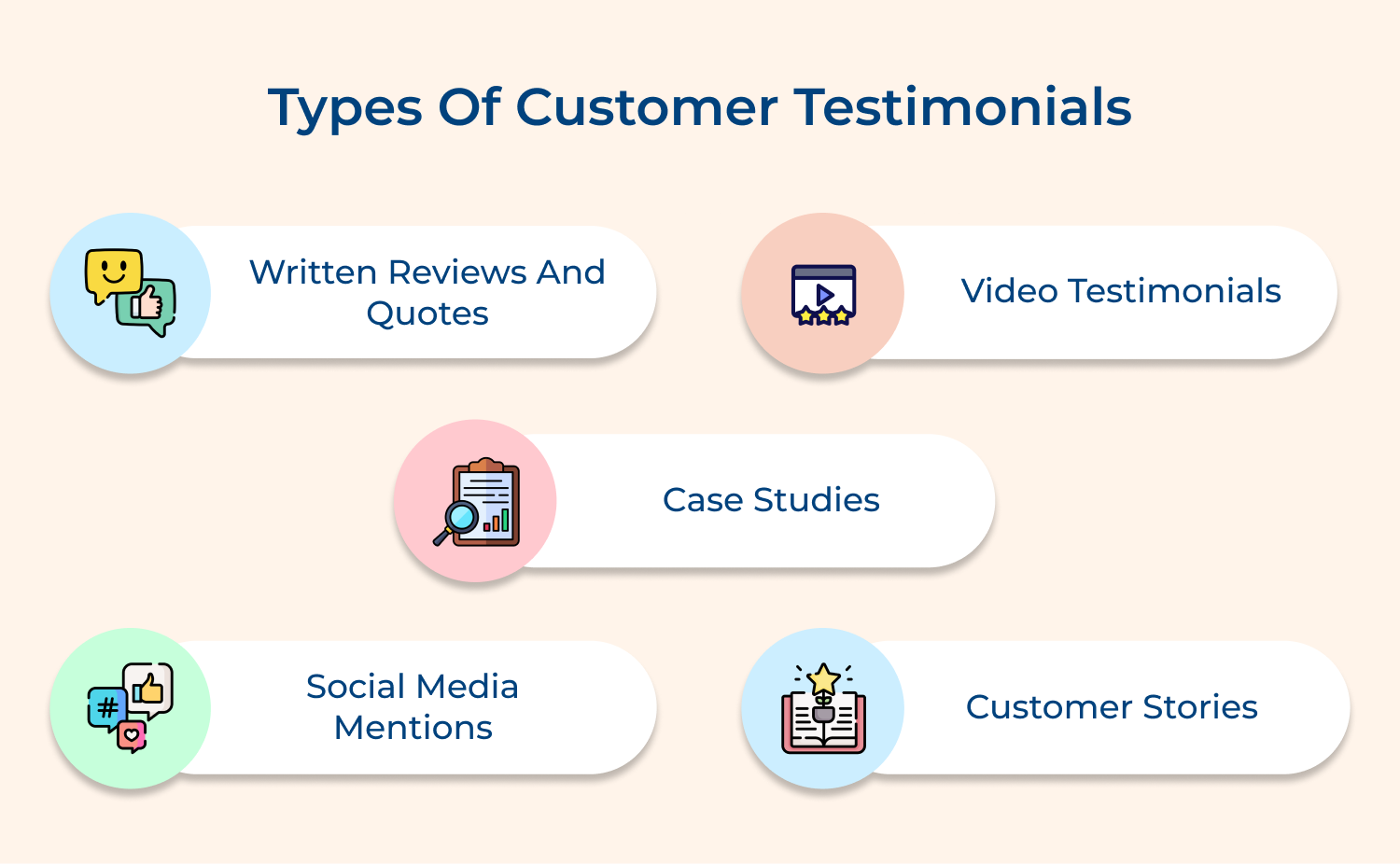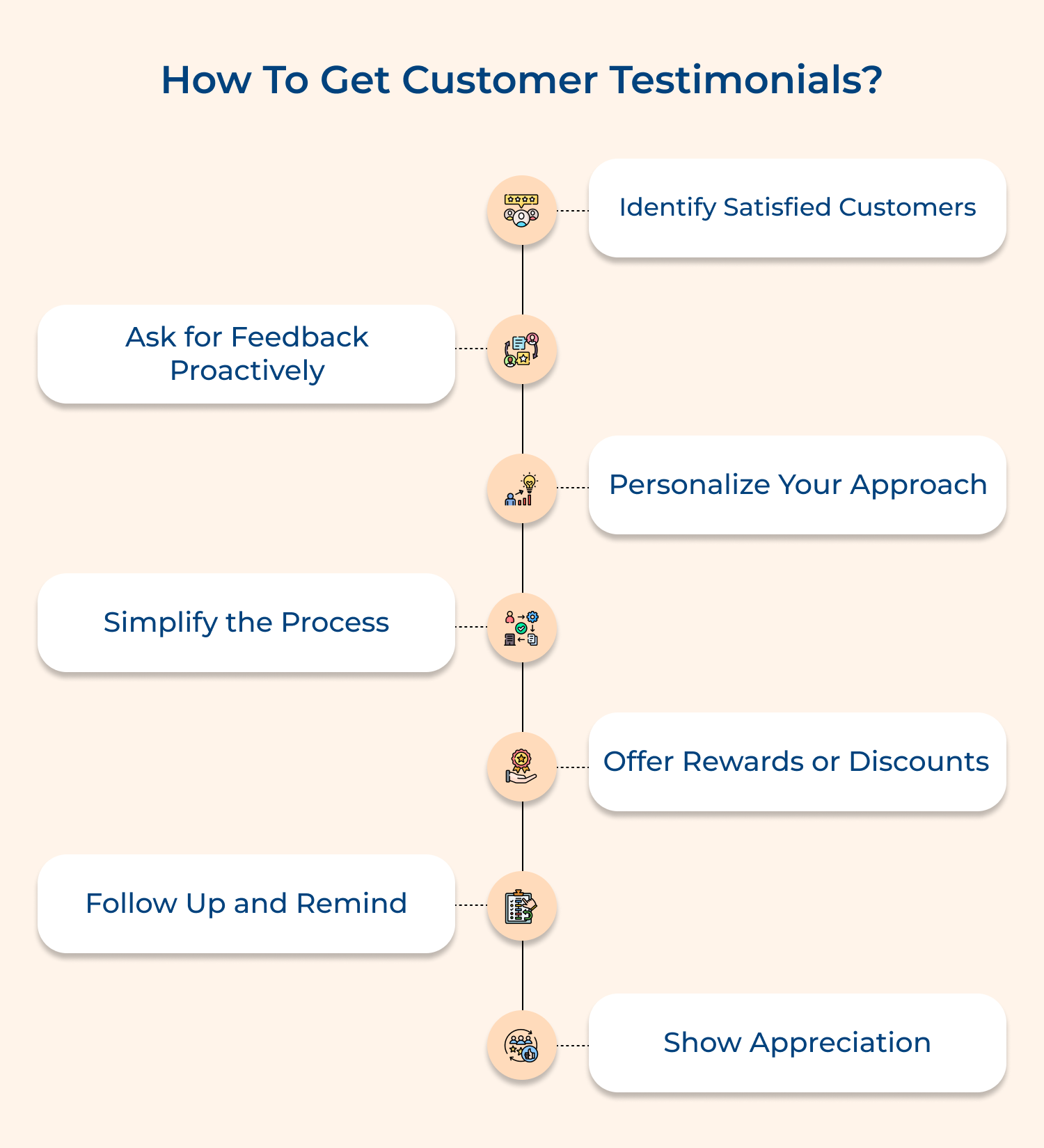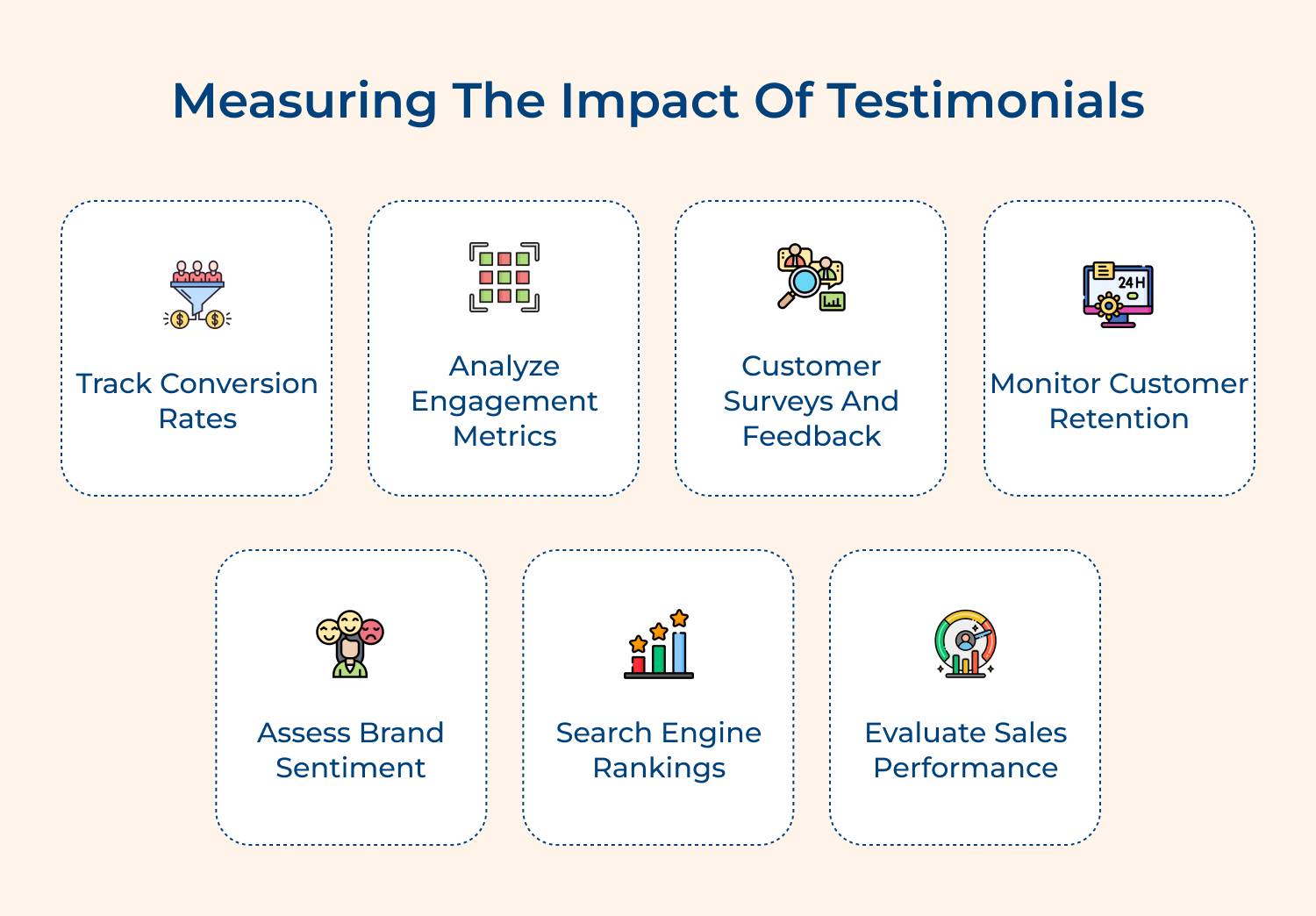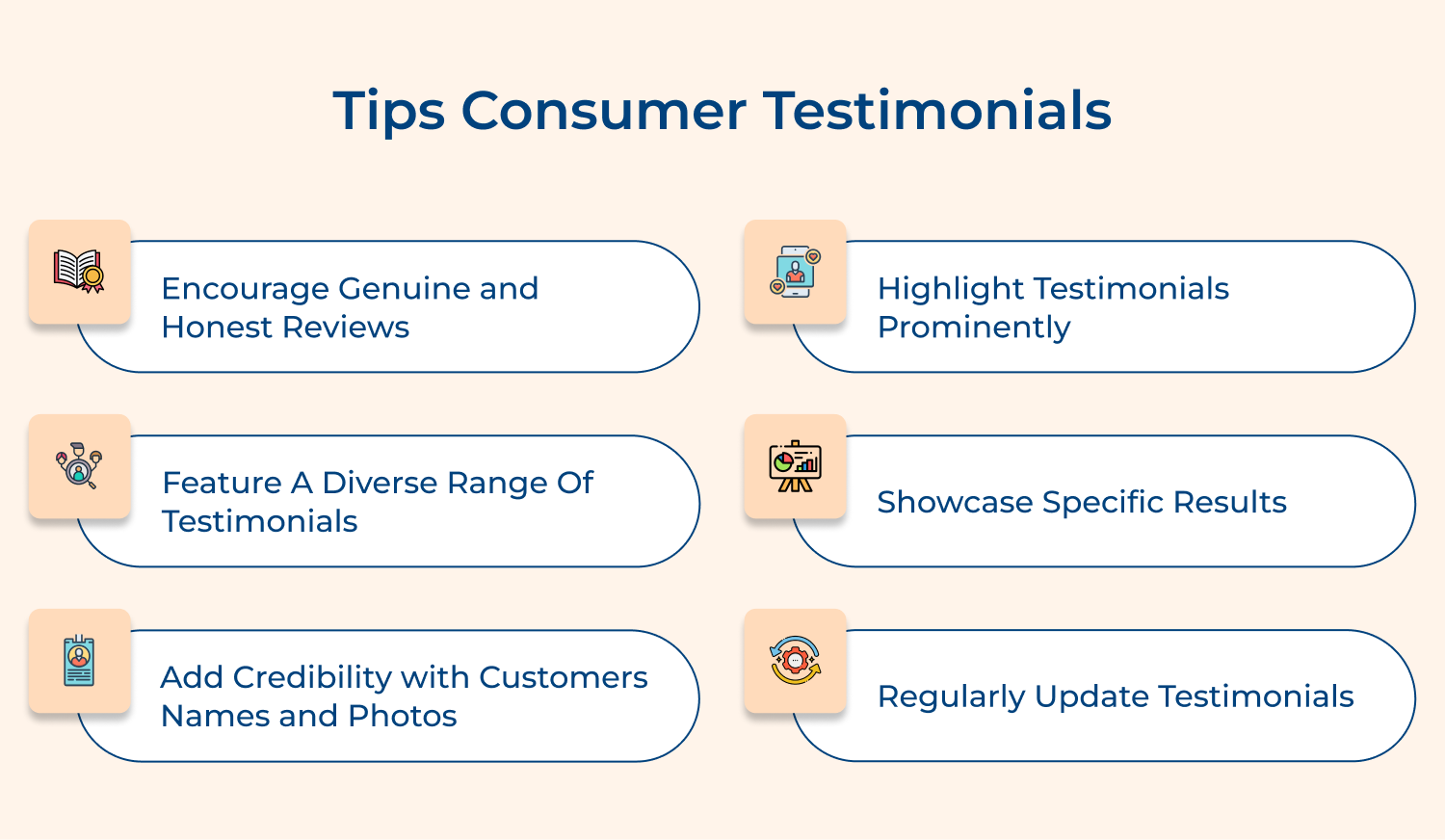1. Encourage Genuine and Honest Reviews
Authenticity is key when it comes to testimonials. Encourage customers to provide genuine and honest feedback rather than scripted or overly polished reviews. Authentic testimonials resonate more with potential customers because they reflect real experiences and emotions.
To facilitate this, create a straightforward process for customers to share their thoughts and offer guidance on what aspects to cover, such as their experience with your product or service, without dictating their exact wording. The more genuine the testimonial, the more credible it appears.
2. Feature a Diverse Range of Testimonials
Diversity in testimonials ensures that different customer perspectives and experiences are represented. Feature testimonials from a variety of customer demographics, including different ages, professions and locations.
The approach helps potential customers see that your product or service is effective for a broad audience and in various scenarios. Highlighting different use cases or benefits through diverse testimonials can also appeal to a wider audience and address varied customer concerns.
3. Add Credibility with Customer Real Names and Photos
Including real names and photos of customers adds a layer of credibility to testimonials. When potential customers see a real person’s name, it enhances the authenticity of the testimonial.
Ensure that you have obtained proper permissions from customers before publishing their names and photos. The practice not only adds credibility but also makes the testimonials more relatable and personal.
4. Highlight Testimonials Prominently
To maximize the impact of testimonials, place them prominently on your website and marketing materials. Feature them on high-traffic pages such as your homepage, product pages and landing pages.
In marketing materials like brochures or social media posts, make sure testimonials stand out and are easy to find. By giving testimonials high visibility, you increase their chances of influencing potential customers and building trust in your brand.
5. Showcase Specific Results
Testimonials that highlight specific results and tangible benefits are more persuasive. Instead of vague praise, encourage customers to share detailed outcomes they experienced, such as improvements in efficiency, cost savings or other measurable benefits. Using concrete examples or statistics helps potential customers understand the real-world impact of your product or service and can be a powerful motivator for making a purchase.
6. Regularly Update Testimonials
Keeping testimonials current is crucial for maintaining their relevance and effectiveness. Regularly update your testimonials to reflect recent customer experiences and showcase ongoing satisfaction with your product or service.
Remove outdated testimonials that may no longer accurately represent the current state of your offerings. By regularly refreshing your testimonials, you ensure that they remain relevant and continue to resonate with potential customers.
Examples of Customer Testimonials
Here are the real-life examples of customer testimonials and how they positively impacted sales:
1. Shopify
Testimonial: “Shopify made setting up my online store a breeze. The intuitive interface and excellent support allowed me to launch my business quickly. Within six months, my sales doubled, and I couldn’t be happier!” — Emily H., E-Commerce Entrepreneur
Impact on Sales: Emily’s testimonial highlights Shopify’s ease of use and effective support. By showcasing how Shopify helped her business grow, the testimonial serves as powerful social proof. The real-world success story can attract new users by demonstrating the platform’s potential to boost sales to streamline operations, thereby driving more sign-ups and increased revenue for Shopify.
2. Dropbox
Testimonial: “Dropbox transformed the way our team collaborates. Sharing files is seamless, and the synchronization between devices is flawless. Since integrating Dropbox into our workflow, our productivity has increased by 30%!” — Alex M., IT Manager
Impact on Sales: Alex’s testimonial emphasizes Dropbox’s role in enhancing team productivity and collaboration. The quantifiable impact on productivity provides concrete evidence of Dropbox’s value, which can be persuasive for potential customers. This kind of testimonial helps Dropbox attract business clients who are seeking effective solutions to improve team efficiency and collaboration.
3. Amazon Web Services (AWS)
Testimonial: “AWS has been a game-changer for our infrastructure. The reliability and scalability of their services have allowed us to handle peak traffic effortlessly. We’ve seen a 40% reduction in costs and a significant improvement in performance.” — Mark R., CTO at FinTech Solutions
Impact on Sales: Mark’s testimonial highlights AWS’s reliability, scalability and cost savings. By providing specific metrics and positive outcomes, the testimonial serves as persuasive evidence of AWS’s effectiveness. Potential customers are more likely to choose AWS when they see real-world results and measurable benefits, boosting AWS’s sales or market share.
4. Adobe Creative Cloud
Testimonial: “Adobe Creative Cloud has transformed my design process. The range of tools and seamless integration between apps has made my work more efficient and creative. It’s an indispensable part of my daily workflow.” — Laura P., Graphic Designer
Impact on Sales: Laura’s testimonial emphasizes the efficiency and creative benefits of Adobe Creative Cloud. Her positive experience and the integration of various tools highlight the product’s value to professionals. The testimonial can attract more designers or creative professionals, driving subscriptions and increasing Adobe’s revenue.
5. Blue Apron
Testimonial: “Blue Apron has made meal planning and cooking so much easier. The recipes are delicious, and the convenience of having fresh ingredients delivered to my door has saved me time and effort. I’ve already recommended it to my entire family!” — John S., Blue Apron Subscriber
Impact on Sales: John’s testimonial focuses on the convenience and quality of Blue Apron’s meal kits. His recommendation to family and friends serves as a form of word-of-mouth marketing, encouraging new subscribers. By highlighting the ease as well as enjoyment of using the service, John’s testimonial helps Blue Apron attract more customers and increase its subscription base.
Harnessing the Power of Customer Testimonials
Incorporating customer testimonials into your marketing strategy is a powerful way to build trust, enhance credibility and drive sales. Genuine feedback from satisfied customers offers authentic proof of your product or service’s value, resonating with potential buyers and addressing their concerns. By actively showcasing diverse, detailed, and personalized testimonials, you can effectively leverage social proof to attract new customers and reinforce your brand’s reputation.
Remember to make the process easy for your customers and show appreciation for their contributions. Utilizing these insights not only boosts your credibility but also supports your overall business growth and success.










